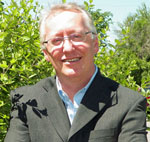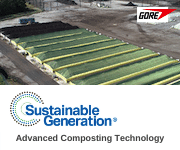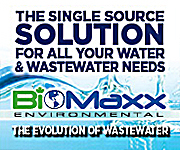 |
||||||||||||||||||||
| Subscribe | Past Issues | www.cwwa.ca | Water Source Magazine | ||||||||||||||||||||
|
CWWA News
That’s right. I’m going back on tour to see you, the CWWA members across Canada. I have been so excited to see everyone again, but after over 2 ½ years of not going to any live events, it seems we’re trying to do them all in the same 6-week period. Starting May 1st you’ll see me in Niagara Falls for the OWWA, then Victoria for BCWWA, back to Niagara for the Canadian Water Summit before heading to San Antonio for AWWA’s ACE event and then London (Ontario) for WEAO.
Federal Initiatives
On March 29, 2022, the Minister of Environment and Climate Change, the Honourable Steven Guilbeault, released the government’s 2030 Emissions Reduction Plan to reduce emissions across the entire economy to reach an emissions reduction target of 40 to 45 percent below 2005 levels by 2030. Health Canada published three new Guidelines for Canadian Drinking Water Quality including:
The preliminary agenda is online. We've got a great lineup of speakers from federal departments and agencies covering initiatives and legislation that impact our members.Spread over several weeks the Window Agenda is designed to offer a spotlight on federal activities related to all aspects of water and wastewater management, allowing you to pick and choose the sessions most relevant for you.
Provincial News
On March 3, 2022, the Minister of the Environment and the Fight Against Climate Change, Mr. Benoit Charette, announced that municipalities responsible for water withdrawals now have access to a new financial assistance program for the development of a plan to better protect their sources of drinking water. The financial assistance granted varies between $24,500 and $123,250 per drinking water production facility. Snippings & Clippings
The Daily Journal San Mateo and local water agencies are examining the feasibility of a water facility project to expand recycled water supply in the area to offset increased demand and drought conditions. KPCW The Snyderville Basin Water Reclamation District uses a certain byproduct to measure how many people are visiting Summit County. It may not smell good, but it’s accurate. The Snyderville Basin Water Reclamation District uses a certain byproduct to measure how many people are visiting Summit County. It may not smell good, but it’s accurate. Orillia Matters A pilot project in Innisfil that hoped to reduce sediment and phosphorus released into Lake Simcoe was a success. A delegation from representatives of the Greenland Group of Companies was invited to a recent council meeting to share the results as the town continues to look for ways to improve its sediment and phosphorus management and reduce negative impacts downstream. Water Canada Over the last decade, flooding has become the costliest extreme weather disaster affecting Canadians. According to research by Intact Center on Climate Adaptation, the average cost of house repairs after a basement flood is $43,000[1]. And the price tag for infrastructure repairs can be much higher, putting additional pressure on – often limited – municipal resources. ES&E Magazine The federal government has earmarked funding to create a Canada Water Agency that will centralize work with communities on freshwater issues, as well as a new Indigenous-led water authority designed to protect eastern Canada. |
||||||||||||||||||||



.png)
.png)
